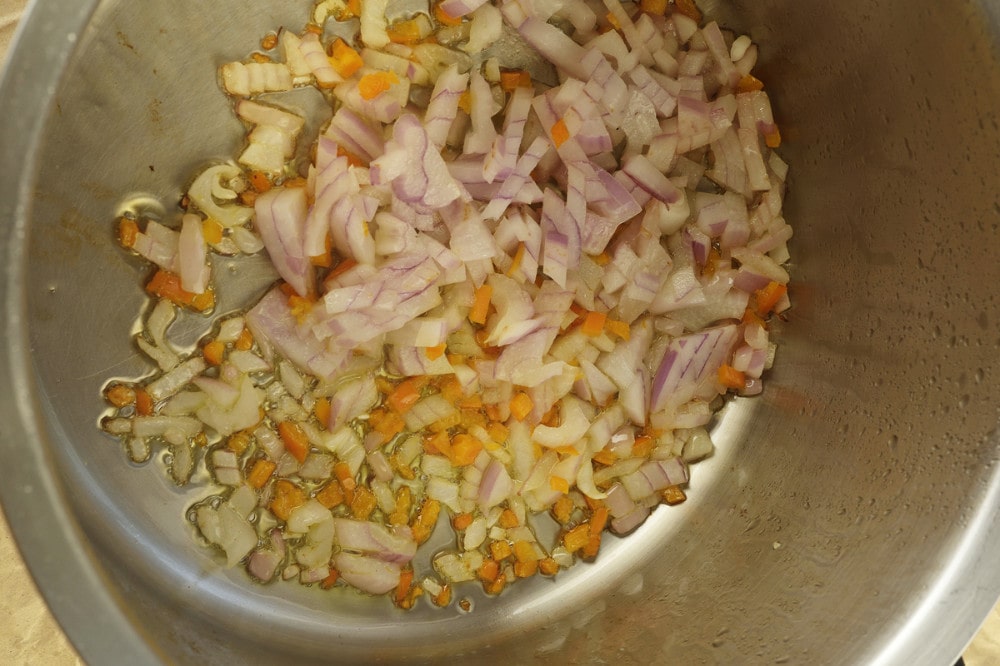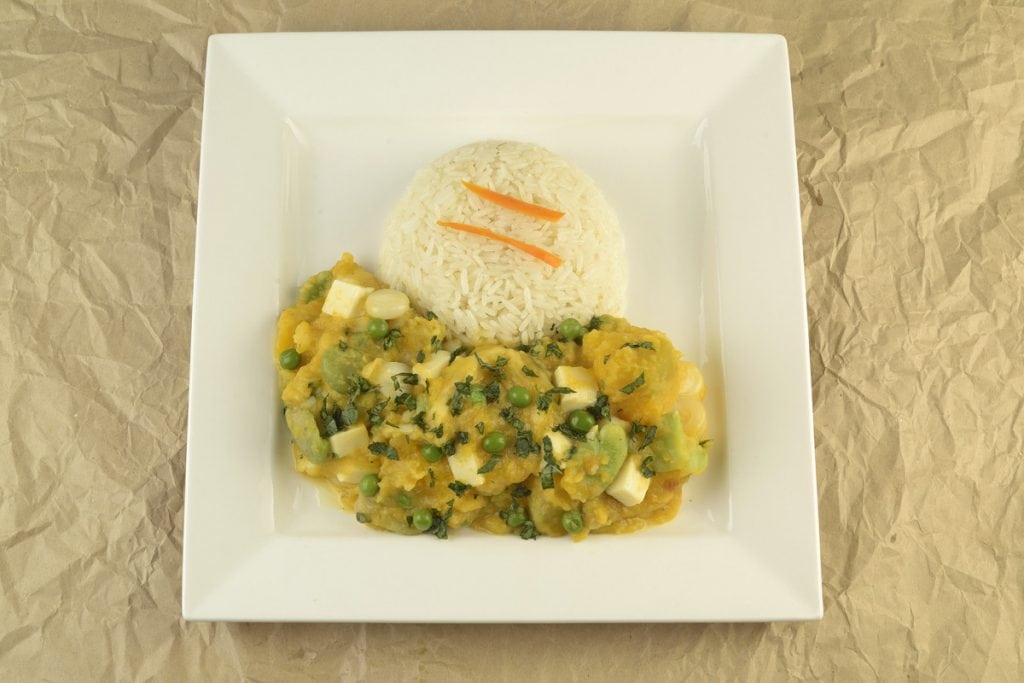Once you’ve tried this Peruvian pumpkin stew, you’ll probably agree that it needs way more recognition and fame than it currently enjoys! Locro de zapallo is a hearty stew that combines pumpkin, butternut squash, potatoes, corn kernels, peas, broad beans, onion, garlic and ají amarillo, with some cheeky cheese cubes thrown in. All accompanied by a portion of white rice.
The dish is often topped with a fried egg or fried fish fillet. It’s the kind of stew that works not only in the winter, but year-round, and comes packed with flavor as well as vitamins.
Let’s follow the pumpkin vine all the way to its origins and then move on to cooking this Peruvian gem ourselves!

All the Latinos are Loco about their Locros
The word locro, referring to a stew, has been registered in writings from Spanish conquistadors and missionaries as early as 1590. However, it’s important to point out that the recipes described back then were nothing like the modern-day locro de zapallo at all. It was originally a stew based on potatoes with some vegetables, some of which included pumpkin.
Most South American countries have one or more stews that use the title locro, but their ingredients vary wildly. Even though several of the ingredients of the modern-day Peruvian version are native to the country (squash, potato, corn, ají amarillo chilli pepper and huacatay), the cheese, milk and egg were added after the Spanish introduced cattle and chickens.
The Argentinian version is made with corn, meat, sausages, lima beans, potato and squash. It’s so popular that it’s actually considered the national dish and is linked to the commemoration of Argentinian independence on May 25th.
Follow the Pumpkin Route
Did you know pumpkin is actually considered a fruit? Took us by surprise too! Different types of pumpkins are now an important ingredient in many cuisines and found all over the world, but the squash originally came from Central America or the north of South America, where it has been consumed for thousands of years.
The type of squash most widely available in Peru (used in this recipe) is Cucurbita moschata, known as calabaza in English or zapallo in Spanish. The Spanish word stems from the term sapallu in Quechua, the indigenous language of the Andes.
However, you can replace it with another type of winter squash that is available where you live.
If you enjoy this recipe, try this creamy Peruvian squash soup to warm you up.

The recipe also calls for some delicious butternut squash, a variety created in the US by crossbreeding two types of squashes, and now also cultivated in Peru, especially in the north of the country. Something else you probably didn’t know is that the word squash comes from the Narragansett Native American word askutasquash, which means “eaten raw or uncooked”.
So in a way the modern-day locro de zapallo is a family portrait where the grandmother zapallo poses together with her great-grandchild, the butternut!
Huacatay
You’ll come across this aromatic herb known as black mint in English in many Peruvian recipes. In this recipe, it’s used raw to give the dish a finishing touch, but the wonderful huacatay also rears its head in many dips, sauces and soups. It’s also one of the herbs often used to season guinea pigs (a Peruvian cuisine delicacy, especially in the Andes).
If you can’t get hold of fresh huacatay where you live, you could substitute it with some cilantro or mint leaves.
Time to whip up your own locro and turn you into a true fan!

Locro de Zapallo
Equipment
Ingredients
- 8 cups zapallo pumpkin or other winter squash, peeled and cut in cubes
- 2 cups butternut squash peeled and cut in cubes
- 2 cups floury potatoes cut in cubes
- 4 cups long-grain white rice boiled
- 1 corn on the cob cut into slices
- 1 medium red onion finely chopped
- 1 tablespoon ají amarillo yellow chilli paste
- 1 tablespoon fresh garlic minced from garlic cloves
- ½ cup green peas
- ½ cup fresh broad beans
- 1 cup water optional
- 1 cup fresh white cheese (queso fresco), cut in cubes
- 2 tablespoons evaporated milk
- 2 tablespoons olive oil or vegetable oil
- 4 eggs optional
- A few sprigs of fresh huacatay or cilantro, chopped
- Salt and pepper to taste
Instructions
- Heat the olive oil in a large pot. Add the garlic, ají amarillo paste and chopped onion into a pot and fry over medium heat for around 3 minutes.
- Add the chopped pumpkin, butternut and potato cubes along with the slices of corn and cook over medium heat for about 15 minutes.
- Monitor the stew and if you feel it’s drying up too much, add a cup of water. (If you don’t have corn on the cob, you could just add 1 cup of sweet corn kernels.)
- Add the green peas and broad beans and cook for another 5 minutes. If using milk, add it now.
- Turn off the heat and add the fresh cheese cubes and chopped huacatay leaves. (This herb can be difficult to find outside of Peru, so you can replace it with some chopped cilantro or mint leaves.)
- Serve accompanied by a generous portion of white rice. Top with a fried egg (optional) and salt and pepper. Enjoy!
Nutrition

Peruvian foodie. I’ve been writing about the food of Peru for over 10 years. Read more about the Eat Peru team here










Aimee
AWEsome! We made this for our Christmas dinner with greens and mango ceviche on the side and it was fantastic! We used sweet potatoes instead of white ones for additional flavor and doubled up on the peas as broad/fava beans were nowhere to be found in our small town, and most of the rest of the ingredients came from our garden and my-oh-my was it delicious! Our entire Peruvian-themed holiday week is on my blog, thanks for the inspiration for the main course!
Norm
I am from america and we do not call it calabaza we call it pumpkin.